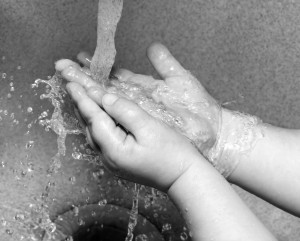 Obsessive Compulsive Disorder (OCD) is an anxiety-based disorder that includes obsessive or obtrusive worry thoughts, which are often followed by compulsive or ritualized behaviors that reduce the anxiety. Common OCD clusters include fears of contamination followed by cleaning behaviors; fears of bad things happening followed by touching, checking or safety rituals; and hoarding and preoccupation with sexual, violent or religious thoughts.
Obsessive Compulsive Disorder (OCD) is an anxiety-based disorder that includes obsessive or obtrusive worry thoughts, which are often followed by compulsive or ritualized behaviors that reduce the anxiety. Common OCD clusters include fears of contamination followed by cleaning behaviors; fears of bad things happening followed by touching, checking or safety rituals; and hoarding and preoccupation with sexual, violent or religious thoughts.
Unlike obsessive-compulsive personality disorder (OCPD) in which the person is more-or-less ok with his/her symptoms, OCD is ego-dystonic which means that the person wants to get rid of the obsessions or compulsions. OCD is different from tics because people with tics do not report obsessive thoughts, but rather experience tics more physically like a bug-bite that needs to be scratched.
OCD occurs in about 1% of the general population and runs in families. OCD can vary significantly in severity and worsen with environmental stressors. Most kids with OCD have other anxiety symptoms (perfectionism, fears, etc…) and will report OCD flare-ups when stressed by environmental stressors (school, relationships, family). Many kids are great at masking or hiding their rituals from peers and teachers.
During the initial sessions, I assess the level of impairment caused by the OCD and when the best time might be to start treatment. For example, many kids exhibit OCD at the start of the school year but then see a major decline in symptoms as they acclimate to the increased academic demands. Treatment is often more effective when the symptoms are more severe, so in this case the best time to act would be in the mid Summer in preparation for the Fall.
Treatment includes psycho-education, followed by awareness, exposure and habit-reversal training. I help kids and families understand the OCD-anxiety cycle: obsessive and irrational thoughts trigger intense anxiety, which is alleviated by the corresponding compulsive behavior which essentially allows the person to escape/avoid the anxiety. This pattern is reinforced over time which makes it harder to break. Treatment focuses on creating behavioral exposure exercises and engaging in incompatible behaviors until the anxiety reduces on its own. Cognitive-behavioral therapy (CBT) is very effective for OCD. Sometimes, if the anxiety is too debilitating, medication is needed.
For kids and teens, parents play a vital role by prompting and reminding their child to practice what is learned in sessions. Rewards can also be included for hard work. In addition, parents will often have experienced their own OCD because of the genetic link, so they can be more empathetic towards their child’s distress.





